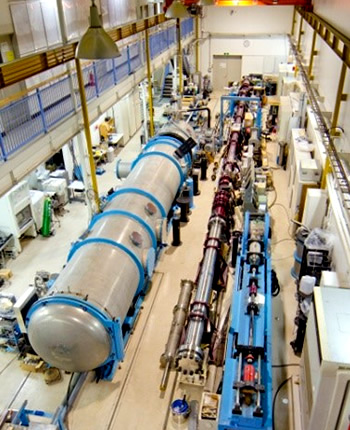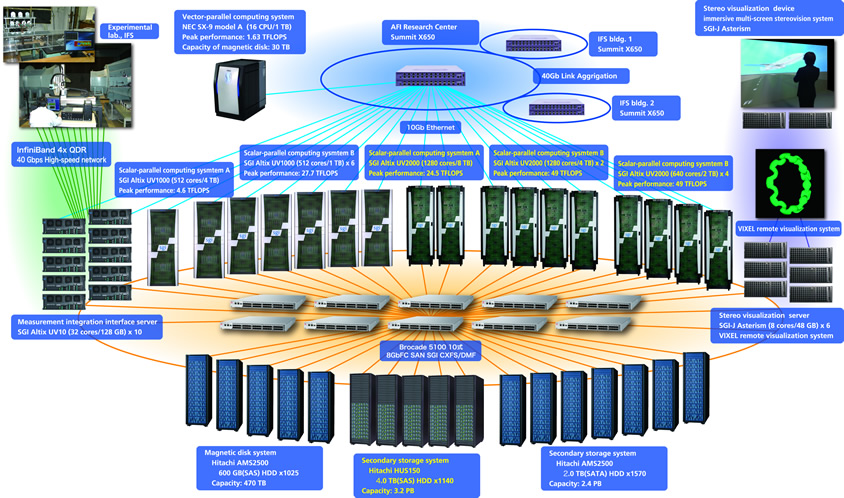Common Facilities
On acceptance of the project, non-IFS members will be qualified as IFS collaborative researchers and be allowed to use IFS facilities under almost the same conditions as IFS members. Non-IFS researchers must follow the IFS rules as same as IFS staff member.
The applicant planning to use IFS' facilities should also apply to use the facilities through the IFS responsible member.
Low Turbulence Wind Tunnel Facility

The Low Turbulence Wind Tunnel facility made available by the Institute of Fluid Science is among the best in the world. Its wind velocity is among the top class in Japan, while at the same time its turbulence levels are among the lowest in the world. Moreover, the uniformity of its velocity profiles is outstanding, making it possible to conduct very high-quality research. In addition, while the quality of the wind flow is equivalent to that of a conventional low turbulence wind tunnel, the measurement devices are small enough to give the device a small turning radius and allow it to be used as a small-scale low turbulence wind tunnel or a low noise wind tunnel for reducing aerodynamic noise.
Shock Wave Research Facilities

The IFS has some equipments such as Ballisticrange, shock tube etc. in the shock wave research facilities.
Ballisticrange is an experimental equipment with 18m in full length. It has an ability that the projectile can be ejected with wide speed ranges from the subsonic to 7 km/s. Using this equipment, the user can conduct an experiment with one mode among three modes; Gas gun, Powder gun and Two-stage light gas gun, in response to the injection speed.
The two-stage light gas gun uses explosives to drive a heavy piston which compresses light gases such as hydrogen or helium. This high temperature, high-pressure gas in turn can propel a projectile up to a speed of several km/s. The facility is used as a hypervelocity ballistic range to study spacecraft reentry and impacts with space debris.
It is also used to study ultra-high pressure phenomena using shock pressure.
Integrated Supercomputation System
The "Integrated Supercomputation System," which consists of scalar- and vector- supercomputing servers, the Three-dimensional Visualization Server for image analysis of computation results, and the Measurement Integration Interface Server to link the supercomputer and experimental measurement system. The data storage system (magnetic disk), which has petabyte class capacity, is connected to the servers using a storage area network (SAN). For the supercomputing servers, SGI UV1000 and UV2000 are used as the Scalar Parallel Computing System, and NEC SX-9 is employed as the Vector Parallel Computing System, providing a total peak performance of 156 TFLOPS and total memory of 35 TB (maximum shared memory 8 TB).

Joint Research - Common Facilities
http://www.ifs.tohoku.ac.jp/eng/common_facilities.html